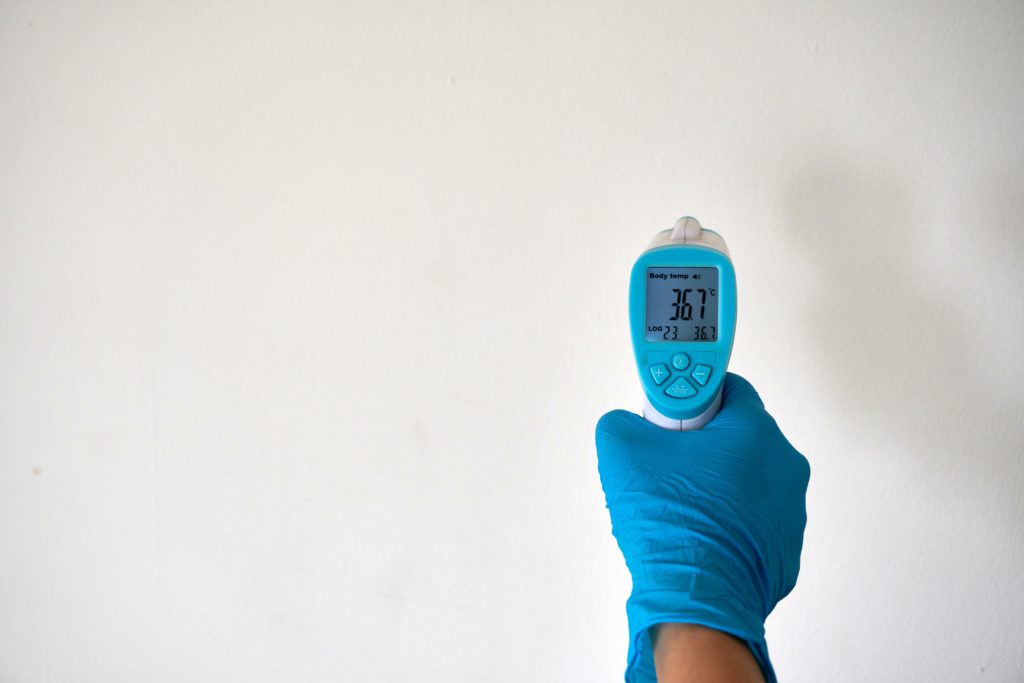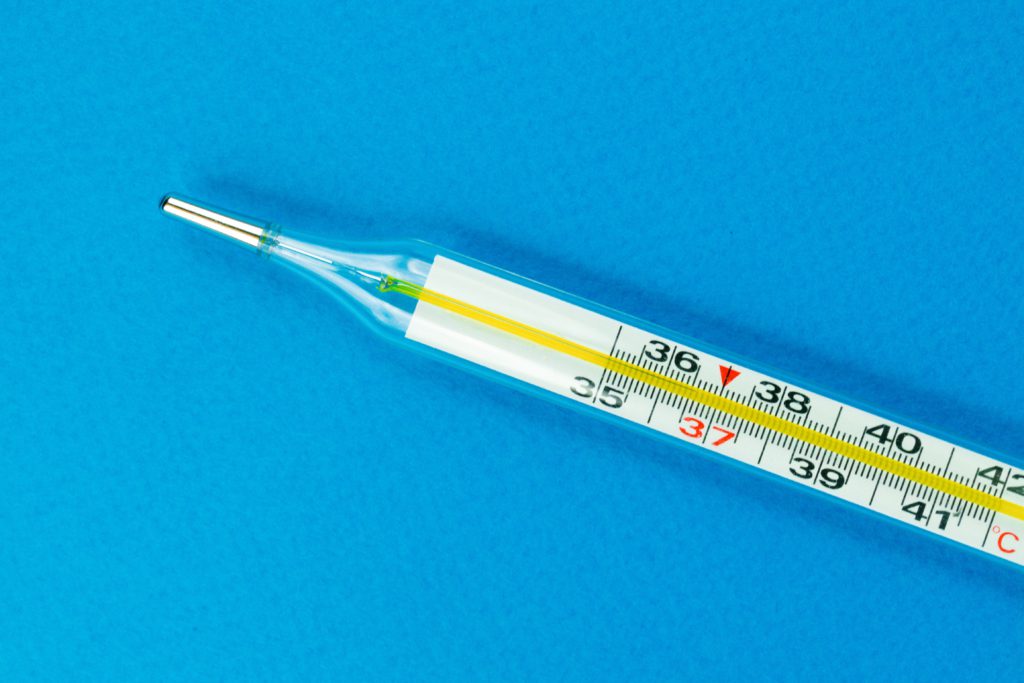A fever is a common problem many new moms have to deal with. The best way to confirm if your baby actually has a fever is to take their temperature with a thermometer.
You may want to do this if you notice your baby has flushed cheeks or feels warm to the touch, sweaty, and clammy. If your baby’s temperature is greater than 100.4°F (38°C), then they may just have a fever.

But what thermometers should you use? How do you make sure your reading is accurate? Keep reading to find out!
Best Thermometers to Accurately Measure Your Baby’s Temperature
There are different types of thermometers available today. Most of them are easy to use and provide quick and accurate results. However, we will talk about the best options for taking your baby’s temperature.
Temporal Artery Thermometer
This is one of the most recent and accurate ways to measure your baby’s temperature. It is also easier to use and causes less discomfort than using a rectal or armpit thermometer.
This new thermometer measures the body’s temperature through the blood flowing through the temporal artery on the forehead.
How to Use A Temporal Artery Thermometer to Measure Your Baby’s Temperature
- Place the thermometer sensor in the center of your baby’s forehead making sure it touches the skin.
- Turn the thermometer on and press the scan button.
- Hold the button down while slowly moving the thermometer across your baby’s forehead towards the top of their ear.
- Pause at the hairline and release the scan button.
- Remove the thermometer and take your temperature reading.

Rectal Thermometer
This is a digital thermometer that can measure your baby’s body temperature through the anus. The American Academy of Pediatrics recommends this thermometer for babies and toddlers below three years of age. It is accurate, quick, and easy to use.
Word of Caution: Please note that a rectal thermometer is different from an oral one. Both have different designs and purposes and can not be used in place of the other. An oral thermometer can injure your baby’s anus if used rectally.
How to Use A Rectal Thermometer to Measure Your Baby’s Temperature
First, confirm that what you have is a rectal thermometer and not an oral one. Rectal thermometers are designed with a safety bulb to protect your baby while taking a temperature reading. Once you have your rectal thermometer, follow these simple steps:
- Put your baby on their belly either across your lap or on a changing table.
- Place one hand on your baby’s lower back and use your thumb and forefinger to gently part their buttcheeks.
- Lubricate the bulb end of the thermometer and direct it towards your baby’s belly button.
- Turn the thermometer on.
- With your free hand, carefully push the lubricated bulb of the thermometer about 1 inch into your baby’s anus.
- Secure the thermometer with your hand while using your other hand to comfort your baby and restrict movement.
- Keep a close watch on your baby once the rectal thermometer is in.
- Keep the thermometer in place until you hear a beep.
- Remove the thermometer and wipe the bulb with a baby wipe.
- Take and record your readings immediately.
- Wash your thermometer with soap and water or rubbing alcohol before storing it in a safe place.
Axillary Thermometer
A digital thermometer can be used to take your baby’s axillary (armpit) temperature. Simply follow these steps:
- Place your baby in a comfortable position on your lap.
- Turn the thermometer on.
- Raise one of your baby’s arms and gently place the thermometer under the armpit.
- Firmly keep your baby’s arm in place to prevent them from displacing the thermometer.
- Hold still until you hear a beep.
- Look for your reading on the display and record immediately.
Your baby is said to have a fever if you get a rectal or temporal artery temperature is 100.4°F (38°C) or an armpit temperature greater than 99°F (37.22°C).
What Not to Use
The mercury-in-glass thermometer is one of the oldest and most accurate thermometers available. However, these thermometers are very dangerous for babies. They can break, releasing tiny splinters of glass and highly poisonous mercury.
Take your child to the doctor right away if your baby is exposed to mercury.

How to Ensure Your Reading is Accurate
The best way to ensure you get an accurate reading is to follow the manufacturer’s instructions carefully. You should also watch out for things that could alter your baby’s temperature like:
- Being wrapped up in a tight blanket for a long time.
- Being in a very warm room.
- Being very active and playful.
- Taking a warm bath
If you suspect your baby’s body is warm due to any of these, give them some time to cool down, then take your reading again.
If your baby’s temperature readings are still high after repeated measurements, then your baby could actually have a fever. However, do not panic as a fever is a common occurrence in babies. For more information on when to start worrying about your baby’s fever, click here.

